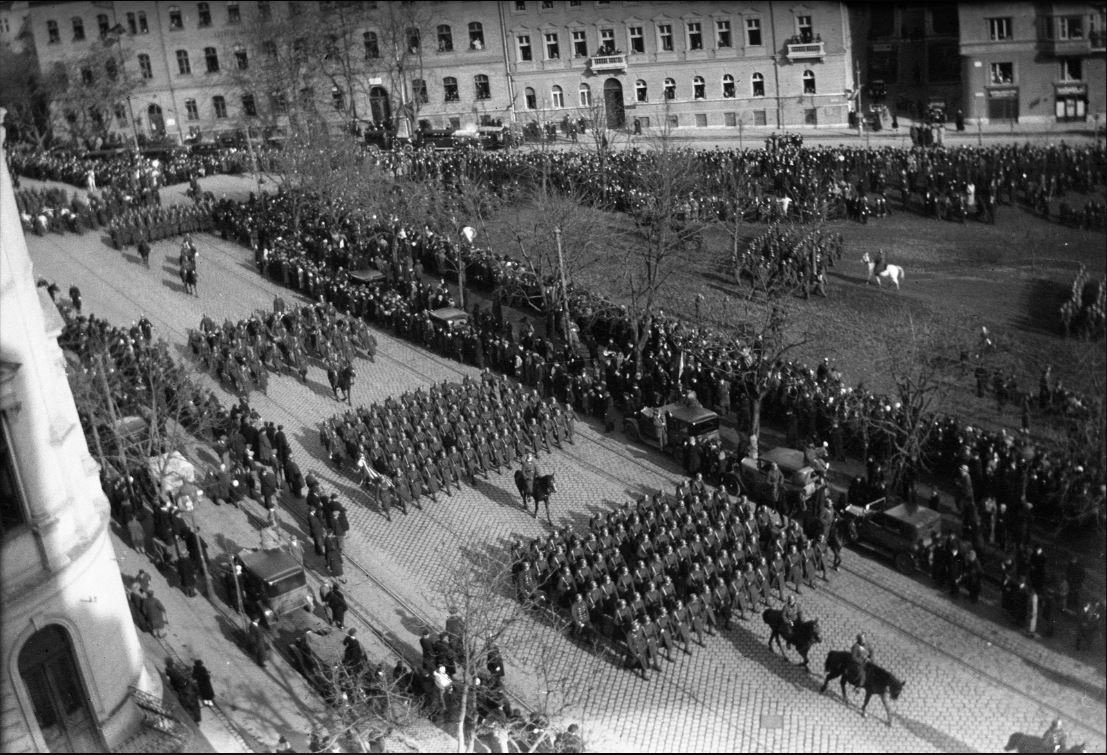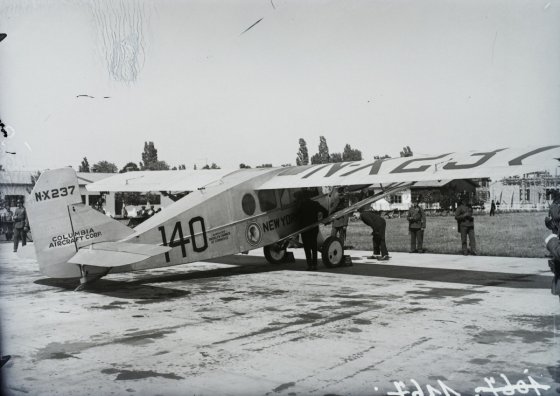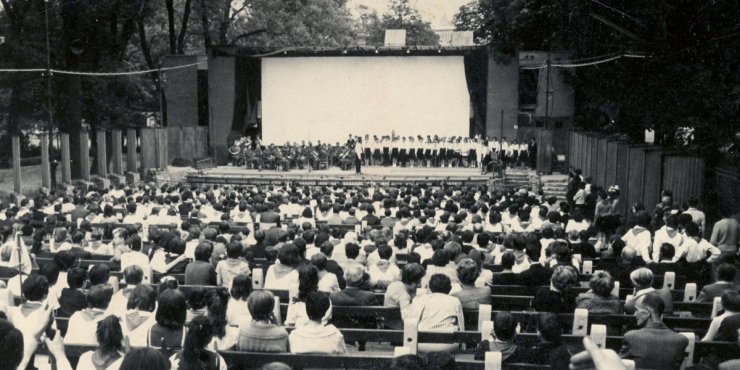After the fall of the Hungarian Soviet Republic, the core of the new Hungarian army became the Nemzeti Hadsereg Főparancsnoksága [General Command of the National Army] organized by Miklós Horthy in Szeged, which was transformed into Fővezérség on 9 August 1919, with a headquarters in Transdanubia, Siófok. The National Army under it soon had a staff of about thirty thousand. Miklós Horthy marched to Budapest on 16 November 1919, which was liberated from the Romanian occupation, leading this National Army.
10th regiment of the Hungarian Defence Forces on the Körönd during the First World War (Image source: FSZEK Budapest Collection)
In front of Miklós Horthy, who was elected governor on 1 March 1920, the Budapest garrison of the National Army took the solemn oath in Vérmező on 11 April 1920. At that time, the Hungarian delegation invited to the peace conference in Paris received the humiliating conditions of peace, which the Hungarian side could not substantially influence. The fifth part of the fourteen-part Trianon peace treaty contained military provisions.
Oath of the Budapest garrison of the National Army in front of Governor Miklós Horthy in Vérmező on 11 April 1920 (Image source: Pesti Napló Képes Műmelléklet, 16 March 1930)
The extremely severe regulations abolished conscription in Hungary, and the army of professional soldiers was limited to thirty-five thousand, including officers as well as military students, civilian personnel, and reserve personnel. But they also set the number of units that could be set up, the proportion of officers and non-commissioned officers. This situation resulted in the total military superiority of the "Little Entente” states surrounding the country as enemies: in the next decade, Romania had an army of two hundred thousand, Czechoslovakia one hundred and fifty thousand, and Yugoslavia also one hundred and fifty thousand.
A group of officers of the National Army in the 22 November 1919 issue of the Tolnai Világlapja
According to military historian Tibor Balla, with military regulations, this was precisely the goal: to ensure the complete military supremacy of the victorious Entente powers and the successor states established on the ruins of the Monarchy. As Tibor Balla put it in the 3rd issue of Hadtörténelem in 2020: “The aim of the winners was for Hungary to have only an army of 35,000 capable of maintaining internal order and serving in the border police, instead of a modern army based on universal military service, which, as the weakest army in the Carpathian Basin region, would be unable to carry out offensive operations due to its small size and minimum armaments. "
The army already numbered more than 115,000 in the fall of 1920, and had to be decommissioned in 1922. Military regulations also applied to various paramilitary, irregular formations: it was forbidden to take part in setting up organizations that could be armed. Strict rules were also laid down for the quantity and quality of armaments, the Hungarian military industry was abolished, and only the necessary replacements were allowed in the remaining state-owned factories.
The Allied Military Control Commission of Hungary, which operated on the funds of the Hungarian state and managed a significant budget, supervised the observance of the regulations, searching hard for Hungarians who really tried to circumvent the humiliating regulations here and there.
Although the National Assembly ratified the Treaty of Trianon in Act XXXIII of 1921, “the Implementation of Certain Prohibitions and Restrictions contained in the Military Provisions of the Treaty of Trianon” was regulated only in Act XI of 1922, published on 25 February 1922.
Memorial in the Maria Theresa barracks on Üllői Road with a scaled-down copy of the Irredenta sculpture group on Szabadság Square (Photo: Fortepan / No.: 43613)
The article introducing the provisions of Trianon specified the legal framework of the provisions of the peace treaty and designated, among other things, the sites of a State Military Materials Factory to be established in Csepel and Tétény. However, with this, the Hungarian military industry with a limited capacity was only nominally under one company, production continued at four different sites.
Despite the promulgation of the law, Hungary continued to try to circumvent the provisions in various ingenious ways, using the concealment of military formations within the framework of law enforcement agencies or the levente movement founded in 1923 to prepare the youth for military service. The development of military equipment and new weapons also took place in secret in the country.
The contrast between the military and other provisions that severely limited Hungary's sovereignty and the irredenta public mood prevailing in the country was enormous. When the Law on Military Restrictions was passed, the Irredenta sculpture group in Szabadság Square had been standing for more than a year, and the irredenta movement interweaving society was unfolding more and more. But almost everyone thought that the fact that two-thirds of the country and one-third of the Hungarian population were now on the other side of the border could not last forever.
Military parade in Vérmező in 1934 in the picture of the 17 November 1934 issue of Képes Pesti Hirlap
The year 1927 would bring relief to the country’s unsustainable military situation. In a more favorable international situation, the Minister of Defense Károly Csáky submitted a bill on 10 February which amended Act XI of 1922, and on March 31, the Allied Military Control Commission was abolished, and the strict control of the Hungarian army ended, and the modernization and development of the army could begin.
This year, 21 June 1927, the English Daily Mail, published an article by its owner, Lord Rothermere, entitled Hungary's Place Under the Sun, that dealt with the injustice of the Trianon peace treaty and raised the need for revision. With this, the press magnate gained great popularity in Hungary, and the hope that the borders could be changed and the lost territories could be regained was revived.
Although these hopes have not materialized, the country's isolation has diminished. As a result of the development of the army that began after 1927, the number of members of the Royal Hungarian Defence Forces more than tripled in ten years.
Cover photo: Ceremony of Miklós Horthy on the occasion of the 15th anniversary of governorship in Vérmező in 1935 (Photo: Fortepan / No.: 53242)






































Hozzászólások
Log in or register to comment!
Login Registration